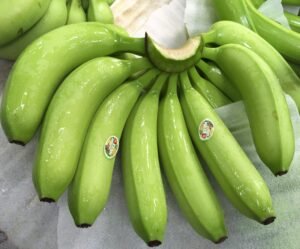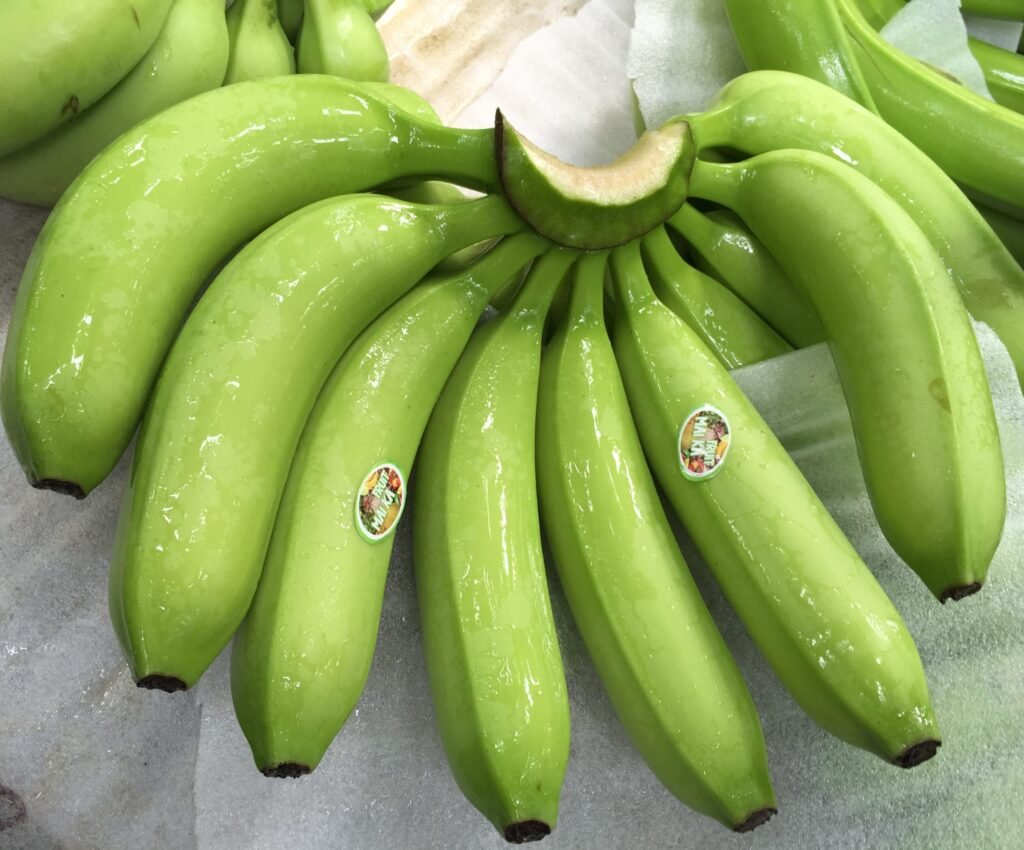Bananas, a staple in households globally, have a fascinating journey from cultivation to our tables. Understanding the intricacies of fresh banana cultivation and farming sheds light on the dedication and expertise required to bring this beloved fruit to market. In this article, we’ll explore the fascinating world of banana cultivation, from planting to harvesting, and the sustainable practices that contribute to a thriving banana industry.

![]() Banana Cultivation Essentials:
Banana Cultivation Essentials:
Before we delve into the details, let’s touch on the fundamental elements of banana cultivation:
![]() 1. Climate: Bananas thrive in tropical climates with consistent warmth and high humidity. They are predominantly grown between the Tropics of Cancer and Capricorn.
1. Climate: Bananas thrive in tropical climates with consistent warmth and high humidity. They are predominantly grown between the Tropics of Cancer and Capricorn.
![]() 2. Soil Conditions: Well-draining, fertile soil is essential for banana plants. They prefer slightly acidic to neutral soils for optimal growth.
2. Soil Conditions: Well-draining, fertile soil is essential for banana plants. They prefer slightly acidic to neutral soils for optimal growth.
![]() 3. Varieties: There are numerous banana varieties, each with its unique flavor, size, and use. Common varieties include Cavendish, plantains, red bananas, and more.
3. Varieties: There are numerous banana varieties, each with its unique flavor, size, and use. Common varieties include Cavendish, plantains, red bananas, and more.
![]() 4. Planting: Bananas are typically grown from suckers, offshoots that develop at the base of the mature plant. These suckers are carefully planted to ensure healthy and robust banana plants.
4. Planting: Bananas are typically grown from suckers, offshoots that develop at the base of the mature plant. These suckers are carefully planted to ensure healthy and robust banana plants.
![]() Stages of Banana Cultivation:
Stages of Banana Cultivation:
![]() 1. Planting: The banana cultivation process begins with planting suckers in prepared soil. Proper spacing and planting depth are crucial for optimal growth.
1. Planting: The banana cultivation process begins with planting suckers in prepared soil. Proper spacing and planting depth are crucial for optimal growth.
![]() 2. Growing Phase: Banana plants require consistent care, including irrigation, fertilization, and protection from pests and diseases during the growing phase. They often take around 9 to 12 months to reach maturity.
2. Growing Phase: Banana plants require consistent care, including irrigation, fertilization, and protection from pests and diseases during the growing phase. They often take around 9 to 12 months to reach maturity.
![]() 3. Flowering: The banana plant produces a large flower spike that eventually transforms into clusters of bananas. Proper care during flowering is essential for high-quality fruit development.
3. Flowering: The banana plant produces a large flower spike that eventually transforms into clusters of bananas. Proper care during flowering is essential for high-quality fruit development.
![]() 4. Harvesting: Bananas are harvested when they reach the desired size and firmness. Harvesting is a delicate process to ensure minimal damage to the fruit.
4. Harvesting: Bananas are harvested when they reach the desired size and firmness. Harvesting is a delicate process to ensure minimal damage to the fruit.
![]() Sustainable Banana Farming Practices:
Sustainable Banana Farming Practices:
![]() 1. Organic Farming: Many banana farms adopt organic practices, avoiding synthetic pesticides and fertilizers to promote soil health and minimize environmental impact.
1. Organic Farming: Many banana farms adopt organic practices, avoiding synthetic pesticides and fertilizers to promote soil health and minimize environmental impact.
![]() 2. Integrated Pest Management (IPM): IPM strategies focus on controlling pests through natural means, reducing the reliance on chemical pesticides.
2. Integrated Pest Management (IPM): IPM strategies focus on controlling pests through natural means, reducing the reliance on chemical pesticides.
![]() 3. Water Conservation: Efficient irrigation systems and water management practices help conserve water resources, especially in regions prone to drought.
3. Water Conservation: Efficient irrigation systems and water management practices help conserve water resources, especially in regions prone to drought.
![]() 4. Biodiversity Preservation: Some banana farms integrate other crops or maintain natural habitats to support biodiversity, creating a balanced and sustainable ecosystem.
4. Biodiversity Preservation: Some banana farms integrate other crops or maintain natural habitats to support biodiversity, creating a balanced and sustainable ecosystem.
![]() Challenges in Banana Farming:
Challenges in Banana Farming:
![]() 1. Disease Management: Bananas are susceptible to diseases such as Panama disease and Black Sigatoka. Continuous research and vigilant management practices are crucial to combat these threats.
1. Disease Management: Bananas are susceptible to diseases such as Panama disease and Black Sigatoka. Continuous research and vigilant management practices are crucial to combat these threats.
![]() 2. Environmental Impact: Intensive banana farming can lead to deforestation and soil degradation. Sustainable practices aim to mitigate these environmental concerns.
2. Environmental Impact: Intensive banana farming can lead to deforestation and soil degradation. Sustainable practices aim to mitigate these environmental concerns.
Fresh banana cultivation and farming represent a delicate balance of nature, expertise, and sustainable practices. From the initial planting of suckers to the careful harvesting of ripe fruit, each stage requires precision and care. By embracing sustainable farming practices, the banana industry not only ensures a bountiful harvest but also contributes to the long-term health of the environment. So, the next time you enjoy a fresh banana, you can appreciate the journey it took from the farm to your table.
____________________________________________________
![]() Best Agricultural Supplier For Export and Import
Best Agricultural Supplier For Export and Import
Vlux Vietnam Import Export Company Limited
Mobile/Whastapp/Wechat: +84 35 939 9345
www.vluxexim.com
Address: No. 58A Vo Van Dung Street, O Cho Dua Ward, Dong Da District, Hanoi City, Vietnam
#agriculturals #agriculturalVietnam #FlavorProfiles #VluxVietnam


